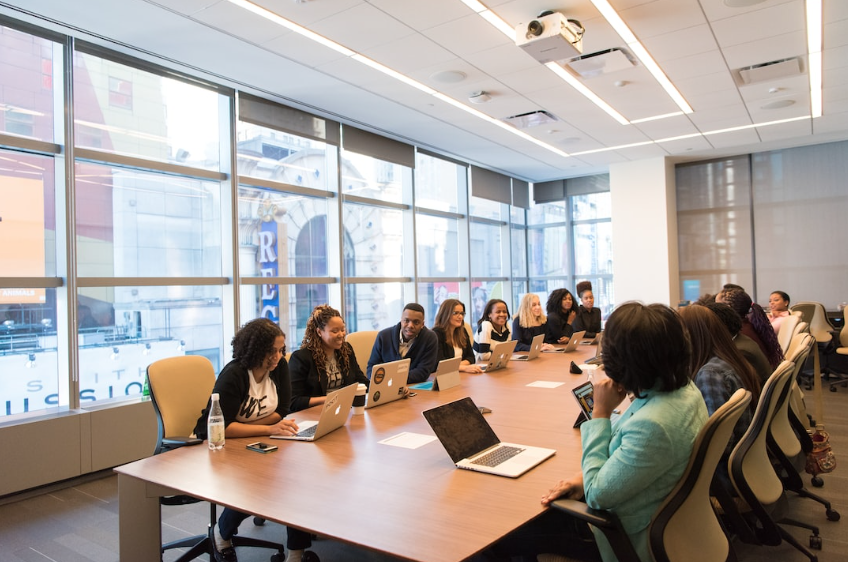
Meetings can often be disorganized and unproductive, leading to wasted time and resources. Despite the advancements in technology, many meeting processes still lack efficiency and effectiveness. This guide aims to assist frustrated attendees by providing tips for better planning, facilitation, and evaluation of meetings. It is particularly relevant for meeting facilitators and teams seeking to enhance their meeting experiences.
Questions to Consider Before the Meeting: Developing a POP (Purpose, Outcomes, Plan)
- What is the objective of the meeting? The objective should clearly state the reason for holding the meeting.
- What are the intended outcomes? Identify the desired results by completing the following sentence.
- Is convening a meeting truly necessary to achieve the purpose and outcomes? Outcomes guide the meeting by indicating the information to be shared and the decisions or actions that need to be taken.
- What alternatives are available to convening a meeting?
- Who should be invited to attend the meeting?
- What is the compatibility of the invitees?
- What is the agenda for the meeting?
- What unforeseen issues may arise?
Strategies for Active Facilitation
Establish ground rules to establish a team agreement on appropriate behavior. This ensures that the meeting remains focused. For example:
- Everyone should participate.
- Challenge ideas, not individuals.
- Start and end the meeting on time.
- Only one conversation should occur at a time.
- Confidentiality should be maintained.
- Evaluate the meeting.
Utilize a “parking lot” to document items that are important but not directly related to the current issue being discussed. The parking lot serves as a visual space, similar to a car parked in a lot, for these items to be noted by a designated person on a flip chart. Assign tasks to participants to be completed before the meeting. If assigning these tasks, follow these guidelines:
- Explain the importance of the task.
- Provide sufficient time for completion.
- Clearly communicate instructions for the task.
- Emphasize the need to complete the task in advance.
- Only assign the task if it will be utilized during the meeting.
- Plan a process for incorporating the assigned tasks during the meeting.
Presentations can be inefficient if not well-planned and facilitated. Adhere to the following guidelines to ensure quality and critical thinking:
- Separate presentations from discussions.
- Allow clarification questions only during the presentation.
- Provide participants with reflective questions:
- What points do you agree or disagree with?
- How could the proposal be improved?
- What new questions does it raise?
Strategies for Breakout Teams in Meetings with 10 or more Participants:
- Utilize small teams working on the same task with report outs.
- Consider small teams working on varied tasks with report outs.
- Determine the space requirements for breakouts.
- Decide the size of the breakout teams.
- Plan the composition of the breakout teams.
- Identify the supplies and materials needed for the breakouts.
- Develop a plan for the breakout team process.
- Establish a process for action on team information.
- Establish a process for making decisions.
Tips for Effective Flip Charting:
- Use flip charts to keep the meeting focused.
- Encourage participants to rely on flip charts instead of taking notes.
- Use flip charts to catch up latecomers.
- Depersonalize ideas using flip charts.
- Assist the notetaker with flip charts.
- Utilize flip charts to retain the visual and emotional process of the meeting.
- Make use of colored markers and a scribe to create a meeting mind map.
- Write down the words that people say if possible.
- Share the role of scribe among multiple members.
- Keep all information visible by hanging the charts.
- Clarify with the team when adding your ideas.
- Seek permission to paraphrase ideas.
- Establish and use a Parking Lot to address off-topic items.
Troubleshooting Behaviors for Conflict Resolution:
- Propose alternatives using phrases like “How about…”
- Build on others’ ideas by saying “To build on Diane’s idea…”
- Seek information by asking “Please describe…”
- Seek opinions by asking “How do you feel, Kenny?”
- Give information by stating “Here is my report…”
- Share opinions by saying “My opinion is…”
- Express disagreement by stating “I disagree with Ron because…”
- Summarize the issue by saying “To recap the issue…”
- Check comprehension by reiterating what was heard by saying “I heard you say…”
- Test for consensus by asking “How many agree?”
- Encourage further discussion by saying “Say more about that idea…”
- Harmonize by asking “What do we agree on?”
- Check performance by asking “How close are we?”
- Set standards by stating “We need to decide by…”
- Relieve tension by injecting humor by saying “The humor in this is…”
- Paraphrase what others have said by saying “What I heard you say was…”
- Refocus the conversation on the original topic and goals.
Addressing Challenging Behaviors and Strategies for Managing Disruptive Conduct
- Dealing with Late Arrivals: Begin the meeting promptly without providing updates. Establish ground rules proactively to prevent issues from arising.
- Managing Side Conversations: Address offenders by making eye contact and referring to them regularly. Offer them the opportunity to share their ideas and confront any unruly behavior.
- Handling Dominating Individuals: Assign them the task of scribing and reinforce the use of established ground rules. Encourage input from all participants to ensure shared responsibility in the meeting process.
- Engaging Quiet Members: Regularly involve them in the discussion without putting them on the spot. Utilize nonverbal communication tactics and acknowledge helpful behavior.
- Managing Rambling Discussions: Maintain focus on the agenda and utilize a Parking Lot method to address relevant points. Schedule private meetings with individuals who repeatedly engage in rambling behavior. Consider developing group signals for addressing such behavior.
- Addressing Negativity: Encourage the group to provide feedback on negative opinions and assess levels of agreement or disagreement. Strive to build consensus and discourage personal attacks. Implement techniques such as the “3-knock rule,” Koosh balls, or periodic process checks to manage negative behavior.
- Building Consensus: Recognize the symptoms of conflict, including the premature dismissal of ideas, personal attacks, lack of building upon previous suggestions, win-lose pressures, and the development of a victim mentality. Take action to resolve conflicts by acknowledging that they are a natural part of the team process and seeking mutually agreed-upon resolutions. Encourage a variety of opinions and actively listen to foster a solution-oriented approach.
- Utilizing Consensus for Decision Making: Use verbal polling or written voting to test for consensus. Apply the consensus formula (C=A+S) to gauge agreement and support. Utilize consensus to determine team functions, project priorities, and key implementation points. This includes establishing meeting frequency, ground rules, roles, and agreeing on project objectives.
- Reflective Evaluation: Seek closure by summarizing and generating conclusions or action items throughout the meeting. Record these on a flip chart to facilitate reaching consensus and ease minute writing. Reflect on the actions and decisions made, identify agenda items for future meetings, and address any remaining open issues. Conduct a post mortem evaluation to strengthen successful meeting elements and eliminate or modify ineffective ones. Consider various approaches for critiquing the session, such as open conversation, written surveys, or a combination of both.




